This post covers the Intune Policy to turn off Content Caching on macOS. Disabling content caching on macOS helps you reduce usage data, and improve the software installation.
Content caching is a service in macOS that speeds up the Apple software downloads that are distributed over the internet. Content caching stores local copies of the software on your Mac, so the downloads are faster for connected clients.
After you turn on content caching on a Mac, the Mac keeps a copy of all the local network’s content that devices (called clients) can download. Content can also be downloaded from multiple iPhone or iPad devices if they’re tethered to a Mac using a cart or USB hub.
You can specify ranges of client IP addresses (for example, one or two subnets) that a content cache is best positioned to serve, and optionally you can make that content exclusive to those clients by choosing the “Devices using custom local networks” option. You can find the Content types supported by the caching service.
By following these steps in the guide, you can use Microsoft Intune to turn off content caching on macOS devices, preventing unintended file sharing through this feature. This approach enhances security posture and ensures that sensitive data remains under strict control.
- Update Intune Company Portal App For MacOS Device
- Intune Cloud PKI To Deliver SSL Code Signing Certificates
Turn Off Content Caching on Mac using Intune
Let’s follow the steps to create macOS configuration profiles to turn on or off content caching on macOS. You need to create a restriction policy from the Intune Admin Center.
- Sign in to the Microsoft Intune Admin Center https://intune.microsoft.com/.
- Select Devices > macOS > Configuration profiles, and click + New Policy. You can now able to Import and Export Settings Catalog Policy from the Intune Admin Center, by clicking Import Policy.
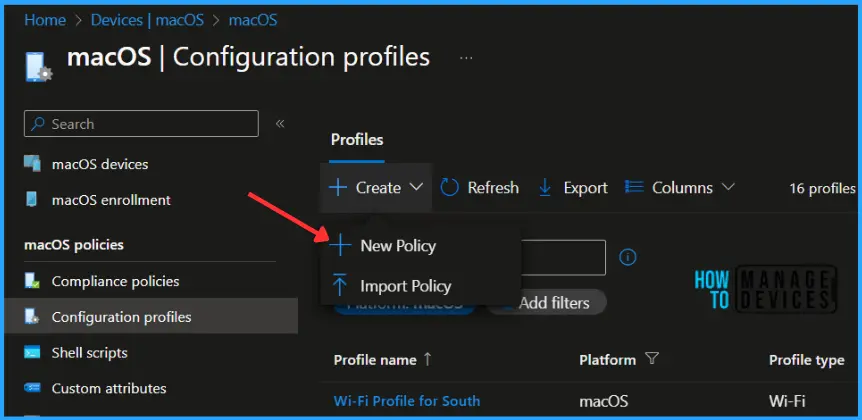
In Create Profile, Select macOS in Platform, and Select Profile Type as Settings Catalog. Click on the Create button.
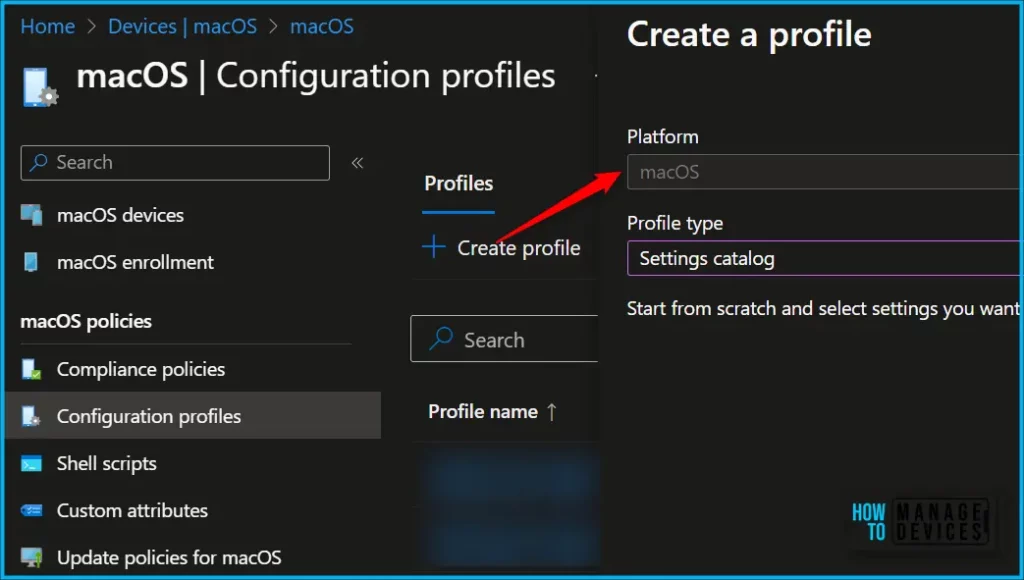
In Basics, enter a descriptive name for the policy. Name your policies so you can easily identify them later (For Example, Turn off Content Caching on mac). Enter a description for the policy. This setting is optional but recommended. Select Next.
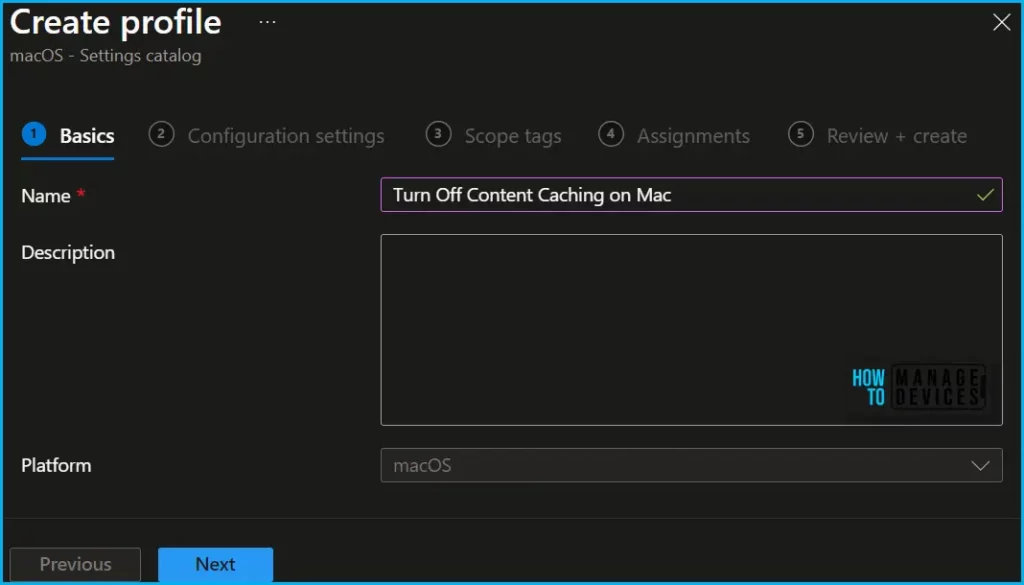
On the macOS Configuration settings tab, With the settings catalog, you can choose which settings you want to configure. Click on Add Settings to browse or search the catalog for the settings you want to configure.
Search for “Allow Content Caching” or “Content Caching”. Select the Restrictions settings from Allow Content Caching from the search result. You can also configure the Content Caching payload to configure devices to save a local copy of content, making it easier to be retrieved by other Apple devices without connecting to the Internet.
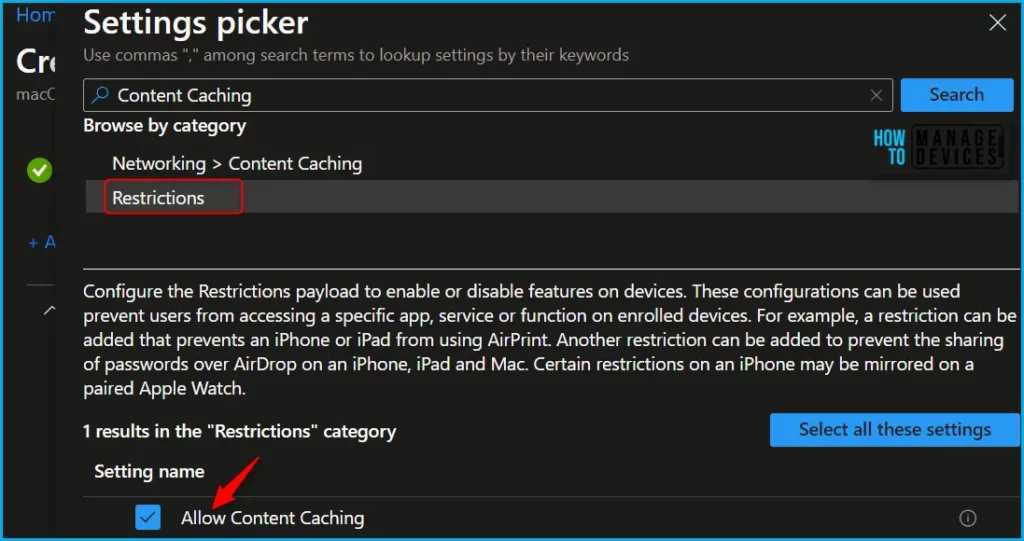
Toggle the switch “Allow Content Caching” to set as False. If false, disables content caching. As of 10.13.4 this is included in the content caching payload. Available in macOS 10.13 and later. Click on Next.
Block content caching: Yes prevents content caching. Content caching stores app data, web browser data, downloads, and more locally on devices. When set to Not configured (default), Intune doesn’t change or update this setting. By default, the OS might enable content caching.
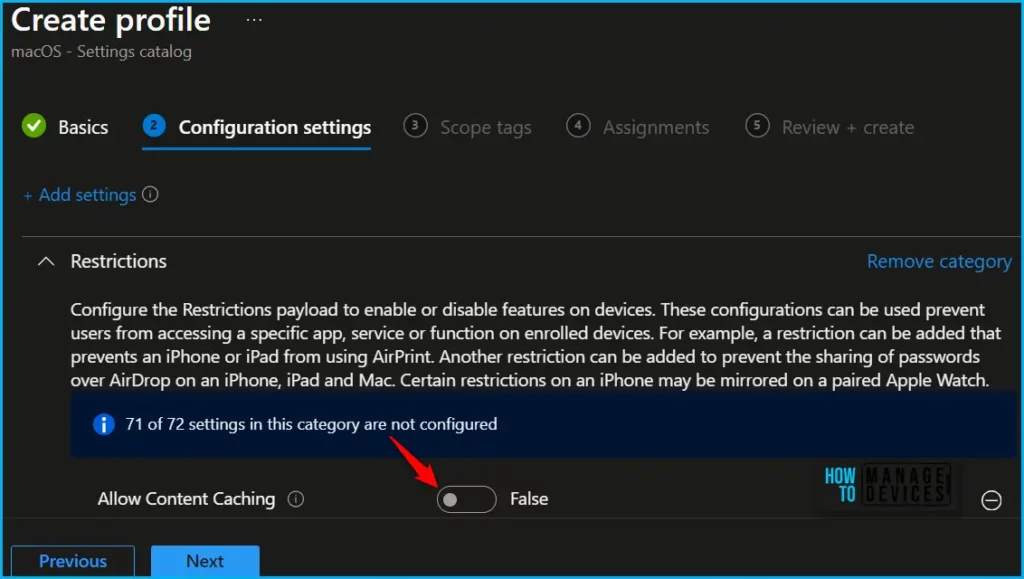
Next, in Assignments, in Included Groups, you need to click on Add Groups, choose Select Groups to include one or more groups to target the macOS restriction policy, and click Next to continue.
In Review + create, review your settings. When you select Create, your changes are saved, and the profile is assigned.
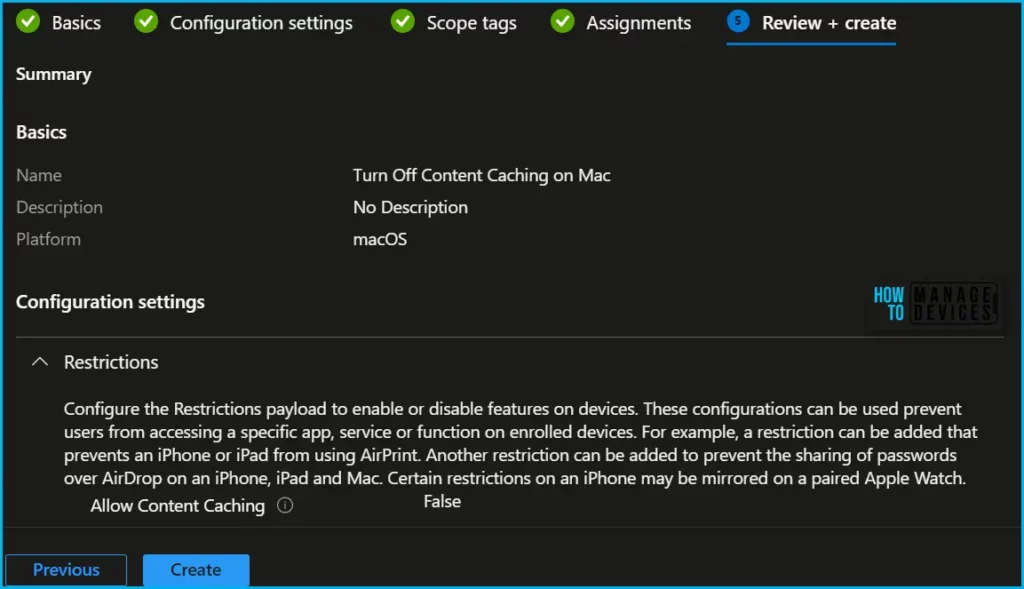
A notification will appear automatically if you see it in the top right-hand corner. You can see that the Policy “Turn off Content Caching on mac” was created successfully. The policy is also shown in the Configuration profiles list.
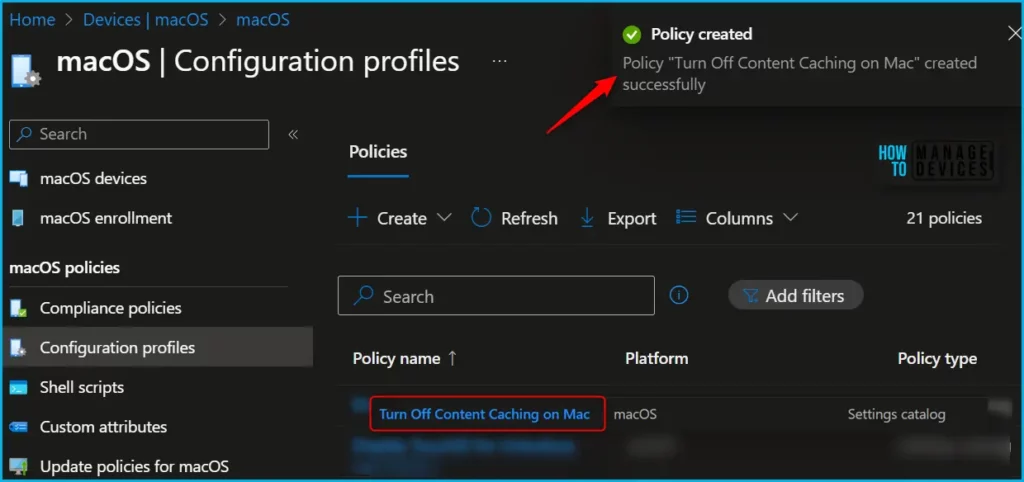
Note! Before deploying profiles in large groups or production, It’s always important to test any configuration changes or scripts in an environment with limited sets of devices before deploying to production devices.
Monitor Intune Policy to Turn off Content Caching on MacOS
Once the Intune macOS restriction policy is deployed to macOS devices, it will take some time to apply, You can get the deployment status on the list of targeted devices by clicking on profile inside macOS > Configuration profiles.
Once you click on the view report button, you can see the list of devices along with their details Device Name, Logged-in User, Check-in Status and Last check-in time.
Also, we can view the two different types of reports, and you can quickly check the update as devices/users check-in status reports.
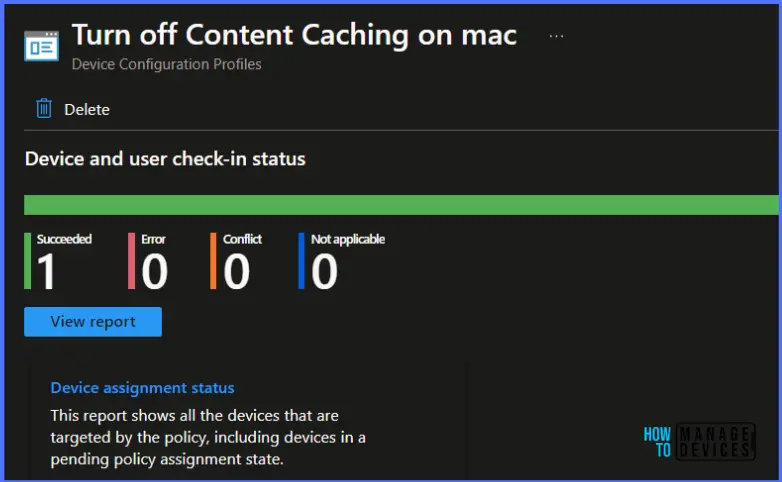
Once the user successfully log in to the macOS device, you can follow the steps below to check the profile status. The specific settings and options might vary based on the version of macOS you are using. You can also initiate the manual sync to speed up if the profile is not received.
- Click on the Apple icon at the top-left corner and select System Settings from the list of options.
- Click General in the sidebar, click Sharing, and then Content Caching should be turned off.
We are on WhatsApp. To get the latest step-by-step guides and news updates, Join our Channel. Click here –HTMD WhatsApp.
Author
About Author – Jitesh, Microsoft MVP, has over six years of working experience in the IT Industry. He writes and shares his experiences related to Microsoft device management technologies and IT Infrastructure management. His primary focus is Windows 10/11 Deployment solution with Configuration Manager, Microsoft Deployment Toolkit (MDT), and Microsoft Intune.
